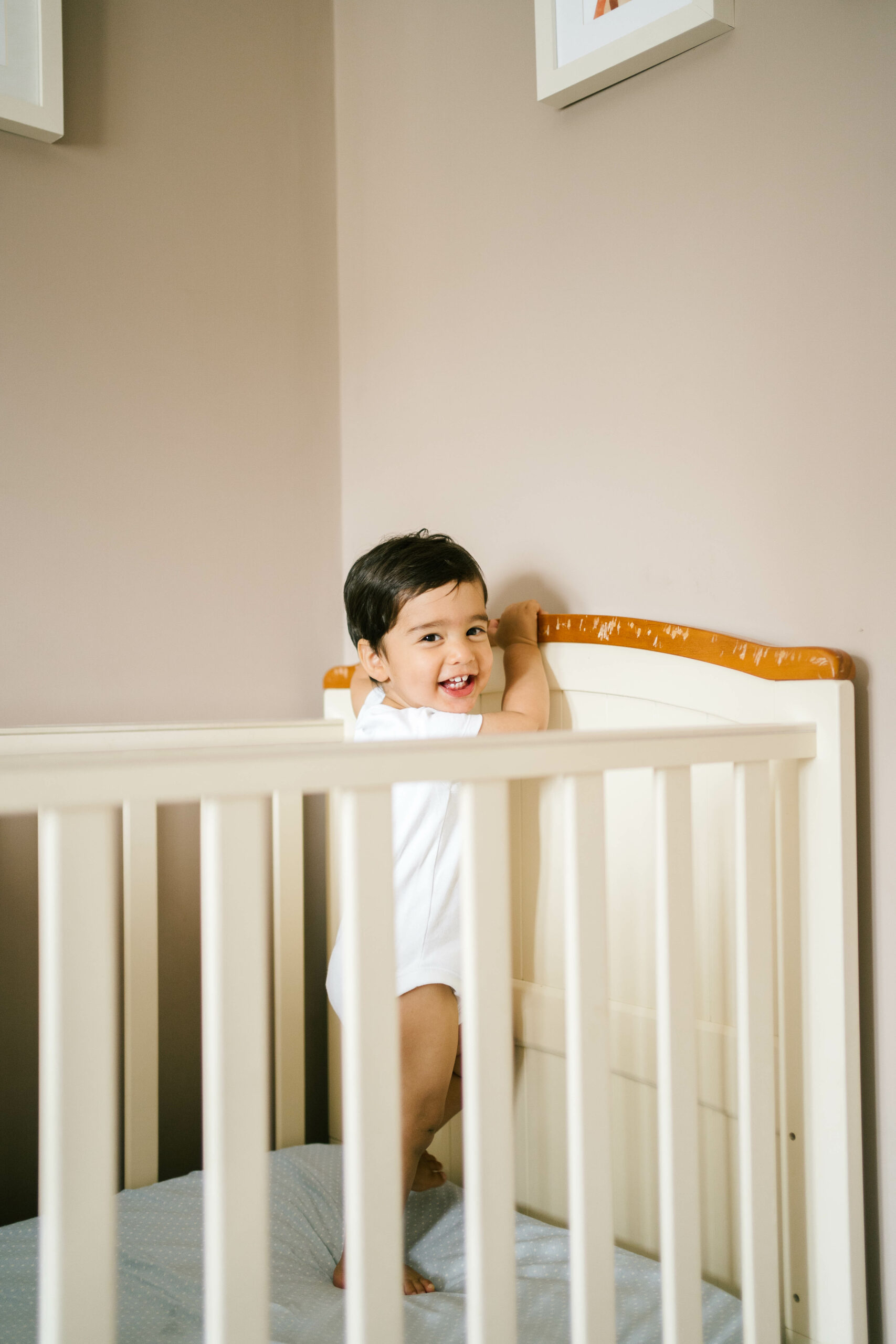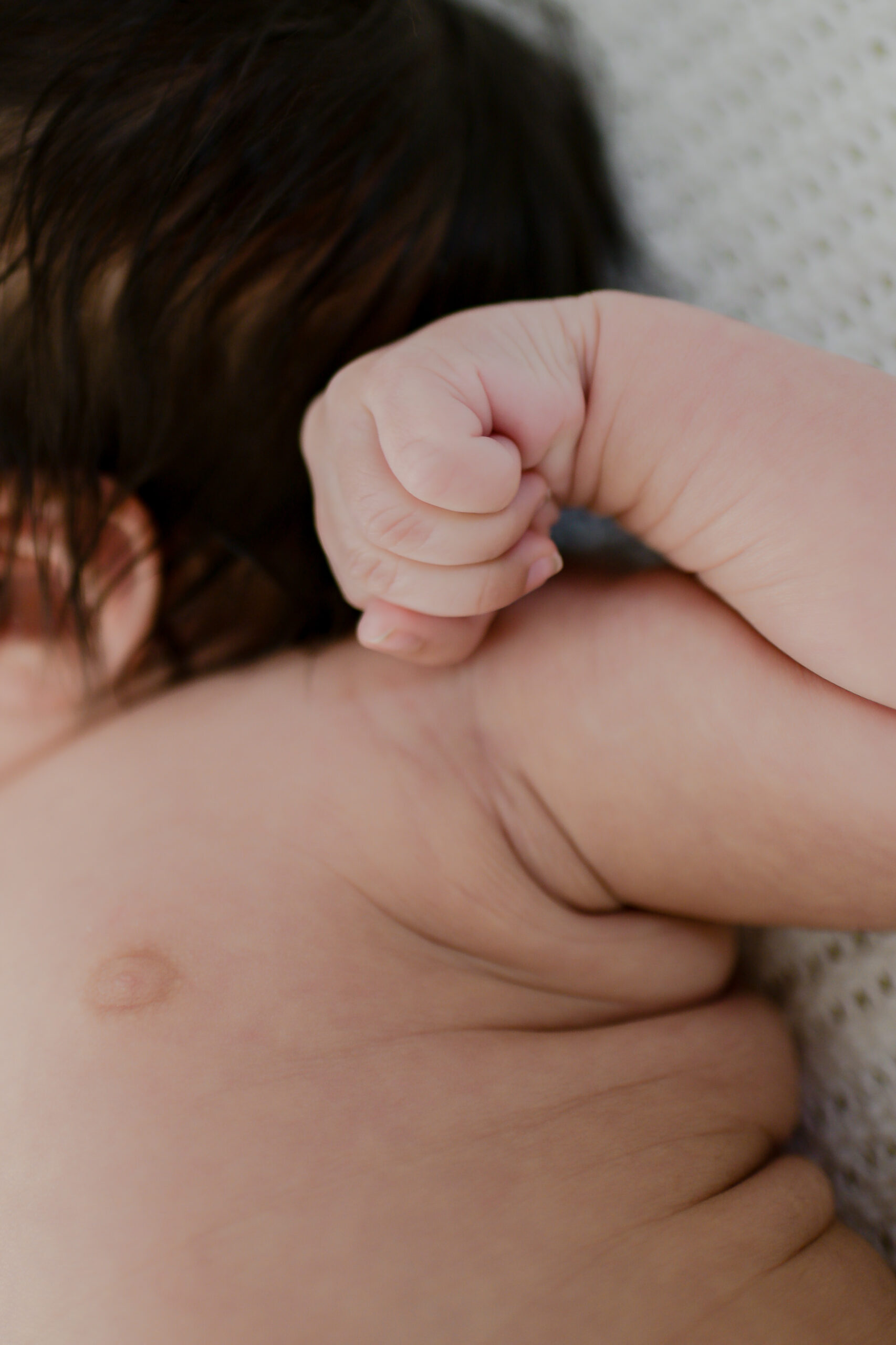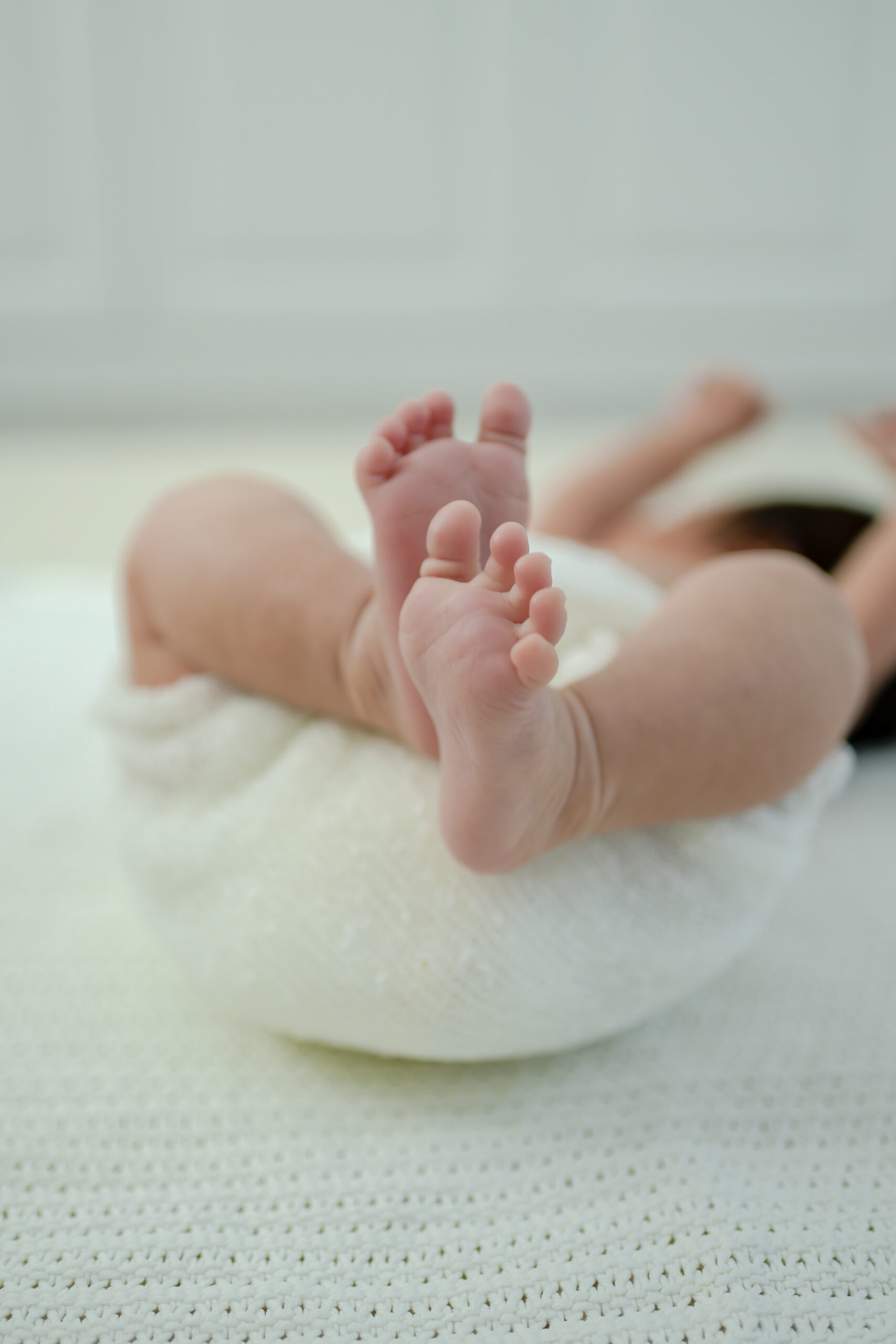There’s few things worse than battling your little one for an hour and a half to get them the sleep they so obviously desperately need, then hearing them wake up again 40 minutes later. Nobody’s getting anything done in 40 minutes – not you, who just managed to pop your tea in the microwave for the second time between hanging up some laundry that’s been sitting in the machine since your little one’s last 40 minute nap, nor your little one who really needs the deep restorative sleep that comes from much longer stretches of slumber.. So why do they happen & what can you do about them? Read on!
-
-
They’re developmentally normal.
-
Although newborns are often very sleepy during the first couple of weeks postpartum, once your little one starts to have more significant periods of wake time during the day, short naps can be developmentally normal up until around 5 or 6 months. At around this age, little ones start to have the ability to consolidate their daytime sleep and link sleep cycles. Until then, it is perfectly normal for a little one’s naps to range anywhere from 20 minutes to a couple of hours.
What can I do about it?
There’s not a huge amount you can do about your child’s developmental stage, but you may find that you can help to extend your little one’s nap if they wake early. At this young age, I’d recommend going in and trying to extend it as soon as they wake. You could pat and shush them, or pick them up and rock them back to sleep. This will help their little bodies get used to longer stretches of sleep, as well as give them some more restorative rest. Although I wouldn’t recommend formal sleep training at this age, you can also give your little one opportunities to practise falling asleep by themselves in their own sleep space. Often babies who are able to self settle (even if that is only sometimes) are able to extend their naps and sleep longer stretches during the day (& night).
-
-
Wake windows are either too long or too short.
-
Wake windows describe the amount of time from when your baby wakes up from a sleep, until they next go to sleep. They’re a really useful tool to use alongside sleep cues, to give us a good idea of how long a little should ideally be awake between sleeps. Many people lean towards longer wake windows, in the hope that their little one might be extra tired, and so sleep better. But in fact, the opposite can happen. Overly long wake windows will lead to the production of cortisol (the human wake hormone) being released into a little one’s system in order to give them a ‘second wind’. With above-optimal levels of cortisol in their system, little ones often then resist sleep, including waking up early from naps.
The opposite problem is that a little one is going into their nap undertired, without sufficient sleep pressure to keep them asleep. This is most usually simply down to a wake window that is too short, although particularly for older babies, it can also be a sign that they are being understimulated during their wake time.
What can I do about it?
First, jot down your wake windows. Sometimes in the thick of everything that’s going on, it can be hard to keep track, and so many parents are surprised by the wake windows they’re using. Try keeping a log of your child’s sleep and wake times over 3-4 days, and work out what their wake windows actually are.
Once you know what wake windows you’re using for your child, compare them with my recommended starting wake windows according to age here. The wake windows given here are averages – but most little ones will fit into these or not be far off. If your little one’s wake windows are wildly different, try using my recommended ones for a few days, and adjust from there.
If you’re not sure if your little one is undertired or overtired, have a read of some of the key signs here. Adjust wake windows accordingly (often gradually is best, especially if you’re not sure). If you think your little one is undertired (often waking content after a short nap), try extending their wake window slightly. And make sure that they are having plenty of fresh air and age-appropriate exercise (whether that’s tummy time, opportunity to practise pulling themselves up on furniture, or kicking a ball around) during their wake time.
-
-
The sleep environment is not optimal
-
Once a baby is around 2-3 months old, their bodies start to naturally produce melatonin at key points in a 24 hour period. Melatonin is the human sleep hormone, and crucially, its production is stimulated by darkness. Darkness therefore becomes absolutely critical to successful sleep from about 2-3 months old onwards, particularly during the day when melatonin levels are naturally lower.
You may also find that your little one is waking up after a single sleep cycle if they’re sleeping in a noisy environment, or somewhere where sudden loud noises (such as a car horn or noisy sibling) can be heard.
What can I do about it?
The first thing to check is that your little one is sleeping in total darkness. At home that may mean getting blackout blinds installed, with curtains over the top to shut out any light which could creep around the edges of the blinds. A quick and easy (if not aesthetically pleasing) solution is to dab a bit of water round the edges of some tin foil, and place it on the windows where it will stick and block out any light. If you’re out and about, I highly recommend buying a SnoozeShade, a lightweight, UV-safe, breathable pram cover that keeps babies cool, protects them from harmful UV rays, whilst providing a portable, blacked out environment for naps on the go. Use code THEGOODNIGHT for 10% off all SnoozeShade products.
The second thing to consider is noise. Although many babies tend to sleep fine with lots of background noise, sudden loud noises will wake them up, particularly in that crucial moment where sleep is lighter as they transition from one sleep cycle to another. If you think noise might be a factor in your little one’s short naps (for example you have another child who is awake during your little one’s nap time, or you can hear traffic from your baby’s bedroom), it may be worth thinking about using white noise. White noise, played continuously throughout the nap, acts as a sound barrier, blocking out sudden external noises. Just make sure it’s not placed right next to baby’s head, and that it is always played below 50dB.
-
-
Baby hasn’t been given the opportunity to transition from wake time to sleep time
-
Like adults, little ones need time and space to wind down from a stimulating activity before dropping off to sleep. Remember that for a little one, being awake and watching the world go by, or reading some books or having a walk in the pram can be very stimulating, and being rushed into a cot without time to wind down will leave some little ones dysregulated and struggling to sleep.
What can I do about it?
Give your little one time to wind down before nap time, by using a simple set of steps to signal to them that it’s time for sleep. It doesn’t need to be complex; we’re looking for simple and consistent. A pre-nap routine might look like this: take them to their room, change nappy, dim the lights and get into sleeping bag, read a book, switch on white noise and switch off any remaining lights, quick cuddle and into bed.
-
-
Your baby is hungry
-
I always advise parents of newborns to follow a feed – wake-time – sleep schedule, in order to encourage a little one to take full feeds and so start to sleep longer stretches. However, once a baby is having longer wake windows and fewer naps, you may need to feed before your little one next wakes from a nap, in order to preserve a regular feed and ensure they are getting sufficient nutrition and going into bed with a nice full tummy.
What can I do about it?
Newborns should be feeding every 2.5-3 hours, so make sure you wake them during the day to fit all those feeds in. And focus on full feeds, so that they’re not waking frequently to snack. For older babies who are not yet weaned, those feeding windows may stretch to 3.5-4 hours (always follow their hunger cues). This may mean that you need to feed BEFORE a nap in order to fit those feeds in and ensure that your little one isn’t waking early from hunger.
-
-
Your baby didn’t build enough sleep pressure to keep them asleep
-
Sleep pressure is the drive to sleep, based on how long a baby is awake, and how much energy they’re expending. During waking hours, sleep pressure builds. As we sleep, sleep pressure decreases and must then build again before we can sleep again. Before we sleep, we need sufficient sleep pressure to get us off to sleep, and to keep us asleep. If a little one has insufficient sleep pressure, even if they drop off, they may wake again shortly, often perfectly content.
What can I do about it?
In most cases, simply extending your little one’s wake windows will resolve this issue. Always go gradually – start by increasing them by just 10-15 minutes at a time. However, other causes of low sleep pressure include dropping off briefly just before a nap – perhaps in the car on the way home from somewhere, or whilst feeding just before your little one is due to sleep. Even a quick ten minute nap can reduce sleep pressure sufficiently that it impacts the actual nap, causing an early wake and inability to go back to sleep. Therefore, if you can avoid a car journey just before a nap, do! Or if it can’t be helped and your little one drops off, increase the wake window slightly before trying to put them down for their nap. Similarly with feeding – by bringing that feed slightly earlier you can help to mitigate against falling asleep instead of feeding – and if your little one is showing signs of dropping off, remove them from the feed and keep them awake!
-
-
Your little isn’t yet able to self-settle
-
Sometime between the ages of 3 & 5 months, a little one will undergo a physiological change in which their sleep patterns mature into more adult-like sleep cycles. Once this has happened, it is quite normal for a little one to wake very briefly at the end of a sleep cycle (which is around 45 minutes) before beginning the next one. For little ones who are able to self-settle at the beginning of a nap, the transition between cycles can be seamless. But for those who are still dependent on something external in order to drop off (for example being rocked, fed or pushed in the pram), they will most likely wake after a single sleep cycle and call out for that same thing in order to be able to drop back off to sleep.
What can I do about it?
Helping your little one to learn those skills of being able to drop off independently will be a game-changer here. There’s many different ways of doing this; contact me here if you’d like to find out more about how I can help you do this using gentle and highly supportive methods that will help your little one start to get the sleep that they need.




